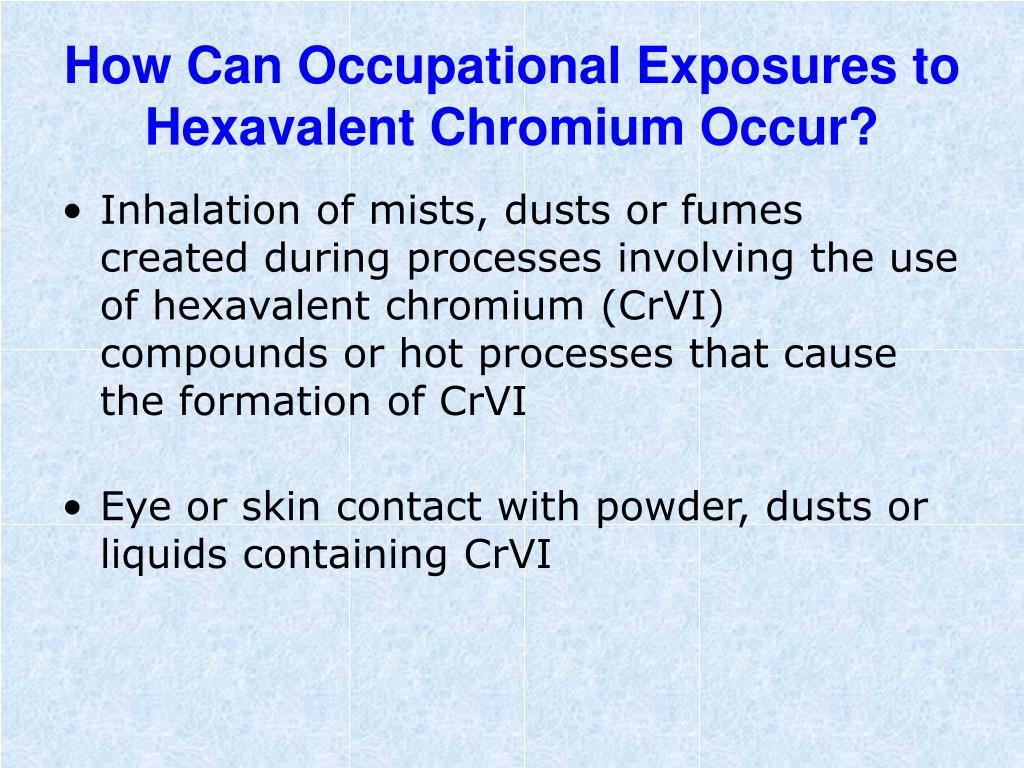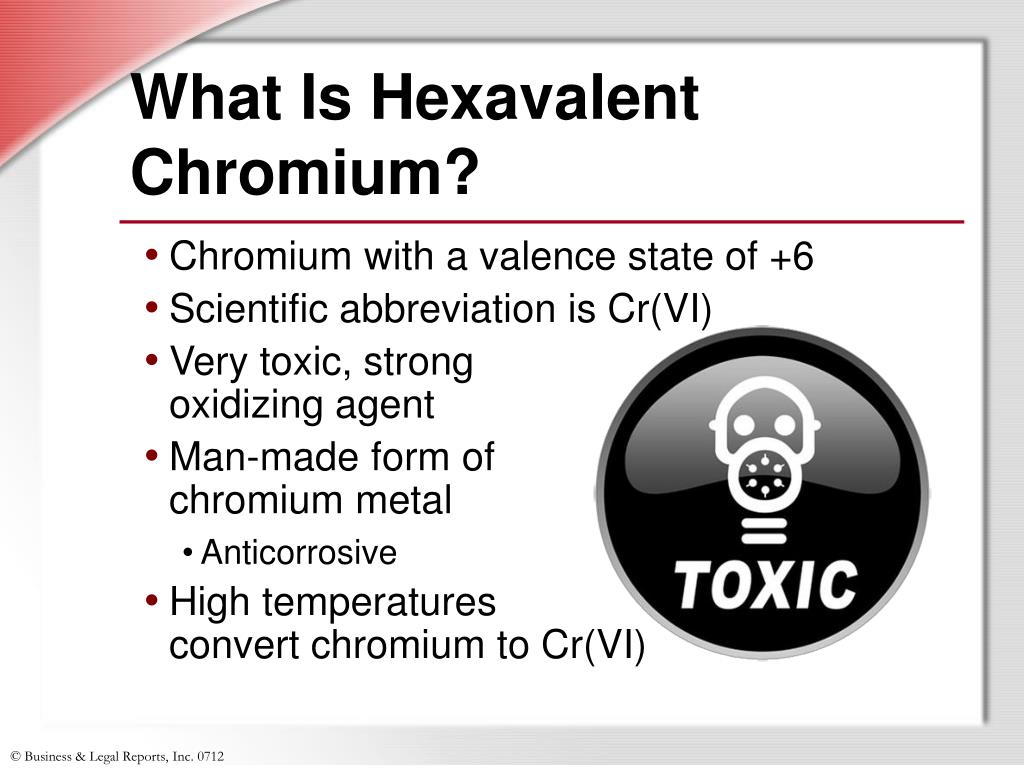

Other Exposures to Hazardous Materials When Welding If the PEL or Action Level to hex chrome is exceeded, the standard requires repeat sampling at either three months (over PEL) or six months (over AL) intervals under two successive samplings are below the Action Level. Monitoring is also required to determine if respiratory protection is required and what is the suitable protection for the particular level of exposure. This personnel sampling will determine if overexposure to hexavalent chromium exists or an action level is exceeded and if so, what action is required to reduce the hex chromium exposure to a safe level. The OSHA standard instituted in 2006, requires monitoring of each welding activity where the potential for exposure to hex chrome exists. Most steel alloys have some chromium in them because it reduces corrosion and increases flexibility. Other forms of welding, MIG, TIG, Plasma Arc, Torch Laser, may also subject a welder to hex chromium exposure. Don’t stop there-other forms of welding may also result in overexposure to hexavalent chromium. The more time a welder spends working on stainless steel in a workday, the more likely an overexposure to hexavalent chromium will occur. The more intense the welding task-such as stick welding with chrome containing welding rods (stick welding is also called SMAW – Shielded Metal Are Welding) the more likely an overexposure to hexavalent chromium will occur. A considerable reduction in the hexavalent chromium PEL since it is accepted to be a cancer-causing agent. The potential for overexposure to hexavalent chromium is a real one due to the fact that the allowable limit for hex chrome, the Permissible Exposure Limit (PEL) is now set at 5 ug/M 3 for an eight-hour workday and an action level of 2.5 ug/M 3.

Hex chrome exposure can also occur on welding on chrome or the use of welding using chrome containing welding rods. (Go to /law-regs-the specific regulations are found under “General Industry’ and “Construction”). Welding on stainless steel can expose welders to hexavalent chromium, also called Chrome 6, or Chrome (VI), which is a suspect cancer-causing substance now specifically regulated by OSHA ( General Industry. Sheriff, MS, CIH, CSP, PresidentįebruHexavalent Chromium Cancer-Causing Substance
Hexavalent chromium stainless steel free#
If you need evaluation of stainless steel welders who are exposed to hexavalent chromium discussed in this article, call us at 97 or e-mail us at for details and a free estimate.

Industrial Hygiene Surveys, Program Development, OSHA Compliance & Health Risk Assessments.This chromium is rapidly reduced to trivalent chromium in cells. Thus, corrosion of implants can lead to the release of the biologically active hexavalent chromium into the body. Cellular uptake of chromium was documented in red blood cells following corrosion of stainless-steel and cobalt-chromium implants in vivo, in the red blood cells of patients undergoing total joint revisions, and in fibroblasts subjected to products of fretting corrosion of stainless-steel and cobalt-chromium implants. The use of the amberlite separation technique demonstrated that the hexavalent Cr in the red blood cells was rapidly reduced to trivalent Cr. The use of the salts also verified that only the hexavalent Cr became red blood cell-associated and that most of this was intracellular rather than membrane bound. We used salts of chromium as trivalent chromium (chromic chloride) and hexavalent chromium (potassium dichromate) to verify that the amberlite separation technique separates hexavalent Cr into the upper phase and trivalent Cr into the lower phase. Uptake of chromium (Cr) by cells and separation using amberlite resin were the methods used to determine that hexavalent Cr was present. Experiments were undertaken to determine whether hexavalent chromium was released during corrosion of orthopedic implants.


 0 kommentar(er)
0 kommentar(er)
